1. Introduction: The Power of Colors in Shaping Human Experience
Colors are fundamental to human perception, shaping our emotional responses and influencing our behavior in subtle yet profound ways. From the vibrant hues of a sunset to the branding colors on a product package, colors serve as non-verbal cues that guide our mood and decision-making processes daily. Recognizing the power of colors is increasingly important in our modern, visually-driven world, where marketing, design, and digital interfaces leverage color psychology to evoke specific feelings and reactions.
Table of Contents
- The Psychology of Colors: Fundamental Concepts and Theories
- Colors and Mood: Exploring Emotional Associations
- Perception and Decision-Making: How Colors Guide Choices
- Modern Applications of Color Psychology
- Symbols and Cultural Significance
- Colors in Gaming and Entertainment
- The Gem Trio Case Study
- Non-Obvious Dimensions of Color Influence
- Ethical Considerations and Future Trends
- Conclusion
2. The Psychology of Colors: Fundamental Concepts and Theories
Color psychology is rooted in the idea that different hues can evoke specific emotional responses due to biological and cultural associations. Basic principles suggest that warm colors like red and orange tend to stimulate excitement or urgency, while cool colors such as blue and green promote calmness and relaxation. These effects are supported by research indicating that color can influence physiological responses, including heart rate and blood pressure.
For instance, a study published in the Journal of Experimental Psychology demonstrated that participants exposed to blue environments reported feeling more relaxed than those in red environments. Cultural context further modulates these responses; while white symbolizes purity in Western cultures, it signifies mourning in some Asian societies. Thus, understanding these variations is crucial for effective application in diverse settings.
3. Colors and Mood: Exploring Emotional Associations
a. Warm vs. Cool Colors and Their Typical Emotional Impacts
Warm colors such as red, orange, and yellow are often linked to feelings of energy, passion, and urgency. For example, red is frequently used in fast-food branding to stimulate appetite and excitement. Conversely, cool colors like blue and green evoke tranquility, trust, and serenity, making them popular choices in healthcare and finance sectors.
b. The Role of Saturation and Brightness in Mood Modulation
Saturation (intensity of the color) and brightness (lightness or darkness) significantly influence emotional perception. Bright, highly saturated colors tend to energize and attract attention, while desaturated or muted tones promote calmness. For instance, a vibrant red evokes excitement, whereas a softer pastel pink can create a sense of comfort and tenderness.
c. Non-Obvious Influences: Subconscious Color Cues and Their Effects
Beyond conscious recognition, colors subtly influence our subconscious. For example, a study found that people exposed to yellow environments were more likely to feel optimistic without realizing why. Such cues can impact mood and behavior in ways that are often overlooked but are powerful in settings like advertising or interior design.
4. Perception and Decision-Making: How Colors Guide Choices
a. The Impact of Color on Consumer Behavior and Branding
Brands strategically select colors to influence consumer perceptions. For example, blue is often used by technology companies like IBM and Intel to convey trust and reliability. Red, as seen in Coca-Cola’s branding, stimulates excitement and appetite. The color palette of a brand can significantly affect customer trust and purchase intent, supported by data showing that up to 85% of consumers cite color as the primary reason for buying a product.
b. Color in User Interface Design and Its Psychological Implications
Digital interfaces employ color to improve usability and influence user behavior. For example, green buttons often indicate ‘go’ or positive action, while red signifies warnings or errors. Effective color use can reduce cognitive load and increase engagement, as evidenced in studies where interface color schemes improved task completion rates.
c. Examples from Marketing, such as Branding Colors of Companies and Products
Consider the branding of omg…, which exemplifies how modern design applies these principles. The choice of vibrant, appealing colors in Gem Trio’s visual identity enhances perceptions of excitement and value, illustrating how strategic color application can elevate brand appeal.
5. Modern Applications of Color Psychology
a. Interior Design and Architecture: Creating Atmospheres Through Color
Interior designers use color to craft specific atmospheres—calming bedrooms often feature soft blues and greens, while energetic spaces like gyms might incorporate reds and yellows. The psychological impact of color helps shape the functional and emotional experience within physical spaces.
b. Fashion and Personal Expression
Fashion trends heavily rely on color psychology. A person choosing a bold red dress may aim to project confidence, while someone opting for pastel shades might seek softness or approachability. Personal color choices are often subconscious expressions of mood or personality traits.
c. Digital Media and Virtual Environments
In online platforms and virtual spaces, color schemes influence user engagement and perception. Social media apps often use contrasting colors to guide attention and enhance usability, leveraging subconscious cues to keep users engaged longer.
6. Symbols and Cultural Significance: From Traditional to Modern Contexts
a. Historical Origins of Color Symbolism
Color symbolism often traces back to historical and cultural roots. For instance, the red and gold hues in traditional Asian festivals symbolize prosperity and good fortune. In Western branding history, logos like Bell-Fruit Gum’s use of vibrant red and yellow evoke excitement and appetite, demonstrating how color symbolism evolves in commercial contexts.
b. The Cultural Meanings of Colors and Symbols in Different Societies
Cultural differences profoundly influence color perception. White signifies purity in Western weddings but mourning in some Asian cultures. Similarly, the color black can symbolize sophistication or grief depending on societal context. Recognizing these variations is essential for effective cross-cultural communication.
c. The Influence of Symbols Like 777 in Slot Culture and Gaming Environments
Symbols such as 777 hold significant cultural weight in gaming, representing luck and jackpot in slot machines. The vivid use of gold and red in such symbols enhances their perception as symbols of wealth and success, illustrating how color and symbol combination influence player psychology and engagement.
7. The Role of Colors in Gaming and Entertainment: Analyzing Slot Culture
a. How Color Schemes in Slot Machines Affect Player Perception and Engagement
Slot machines employ vibrant color schemes—reds, golds, and bright greens—to attract players and evoke excitement. These choices are grounded in research showing that warm, bright colors increase arousal and prolong engagement, often subconsciously encouraging continued play.
b. The Significance of Symbols Like 777 and Their Visual Impact
The iconic 777 symbol, often highlighted in golden hues, triggers associations with luck and wealth. Its visual prominence creates a sense of anticipation and reward, leveraging color psychology to enhance the perception of a potential jackpot.
c. Slot RTP and Color Cues: Subconscious Influences on Player Behavior
Return-to-player (RTP) percentages are often complemented by color cues that influence player perception of fairness and opportunity. Bright, inviting colors around payout symbols increase the likelihood of continued play, illustrating the integration of visual design and behavioral psychology.
8. Modern Examples of Color Influence: The Gem Trio Case Study
a. Introduction to Gem Trio and Its Visual Design
Gem Trio exemplifies how strategic color choices can evoke specific emotional responses. Its vibrant palette combines rich reds, bright blues, and metallic golds, creating an engaging visual experience designed to attract players and evoke excitement.
b. How Color Choices in Gem Trio Evoke Specific Emotional Responses
The use of red stimulates energy and urgency, while blue fosters trust and calmness. Gold accents convey a sense of value and luxury. This deliberate combination enhances perceptions of potential reward and satisfaction, illustrating how color psychology can be harnessed in modern game design.
c. The Strategic Use of Color to Enhance Perception of Value and Excitement
By aligning color choices with psychological principles, Gem Trio amplifies user engagement and perceived value. Such design strategies are rooted in research demonstrating that color can influence not only mood but also subjective valuation, leading to increased player retention and satisfaction. For more insights into how visual design impacts user perception, explore this omg….
9. Non-Obvious Dimensions of Color Influence
a. The Science of Color Perception Under Different Lighting Conditions
Lighting significantly alters how colors are perceived. For example, colors may appear differently under daylight compared to artificial light, affecting mood and recognition. This phenomenon influences interior lighting design, retail displays, and digital screens, emphasizing the importance of context in color perception.
b. The Impact of Color on Memory and Recall in Advertising
Colors can enhance memory retention, with studies indicating that ads featuring certain hues are more likely to be recalled. For instance, red and yellow combinations tend to be more memorable, which explains their frequent use in fast-food branding and promotional materials.
c. How Personal Experiences and Associations Modify Color Effects
Individual experiences heavily influence color perception. Someone who associates blue with calmness due to positive memories may respond more favorably to blue environments. Personalization of color schemes in marketing or design can thus enhance emotional impact.
10. Ethical Considerations and Future Trends in Color Use
a. Manipulative Uses of Color in Marketing and Media
While color can enhance user experience, it also poses ethical challenges when used to manipulate consumer behavior unfairly. For example, deceptive color schemes might induce impulsive purchases or obscure product flaws, raising questions about transparency and consumer protection.
b. Emerging Technologies and Innovations in Color Display and Perception
Advances in display technology, such as high-dynamic-range (HDR) screens and virtual reality, allow for more accurate and immersive color experiences. These innovations help us understand how nuanced color perception can be and open new avenues for applications in education, therapy, and entertainment.
c. The Evolving Understanding of Color’s Role in Shaping Human Perception in a Digital Age
As digital environments become ubiquitous, our understanding of color’s psychological impact is deepening. Future trends include personalized color schemes based on biometric feedback and AI-driven adaptive environments, promising a more tailored and effective use of color in shaping perceptions.
11. Conclusion: Integrating Knowledge of Color Influence in Modern Life
The influence of colors


Leave A Comment